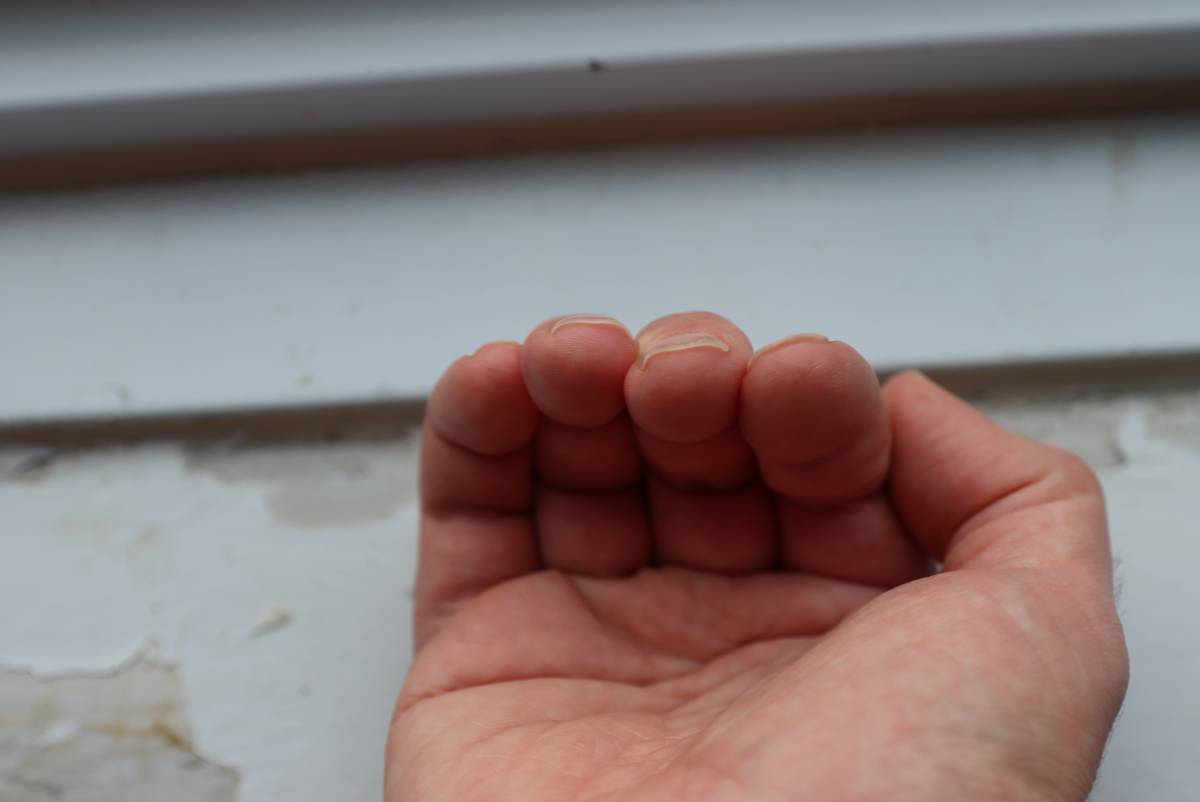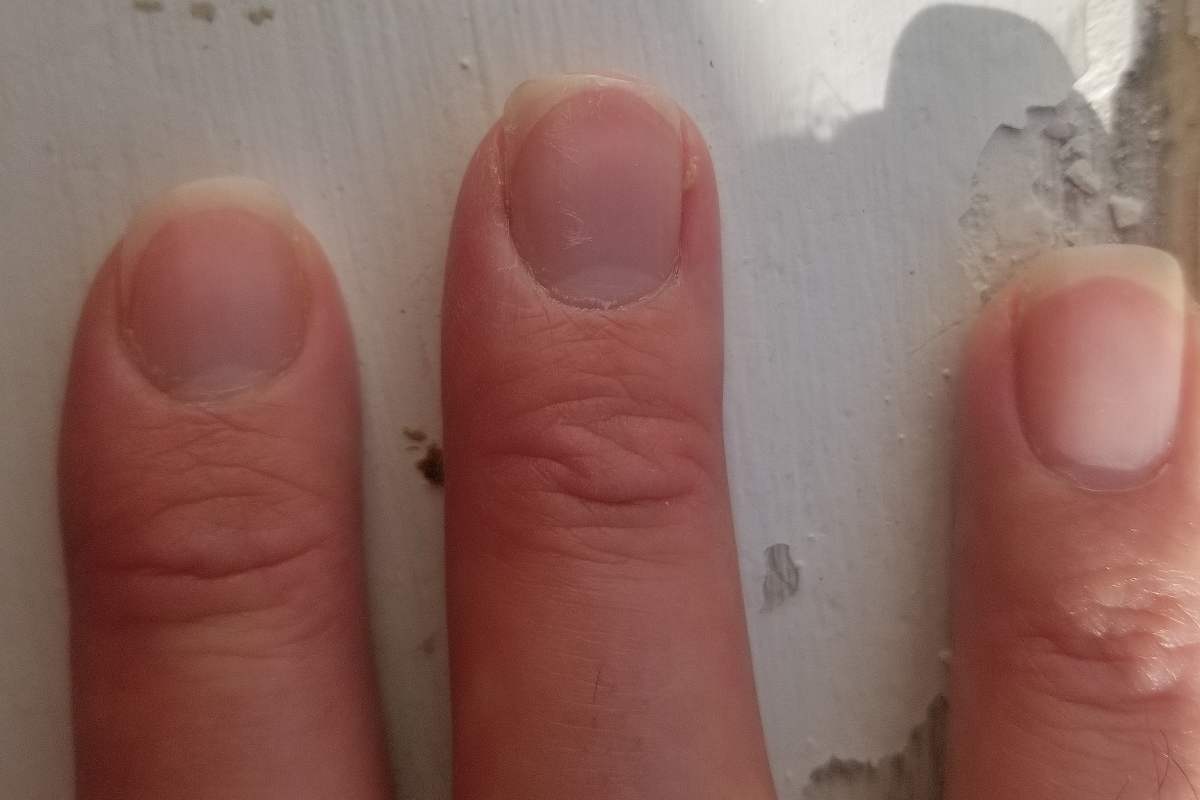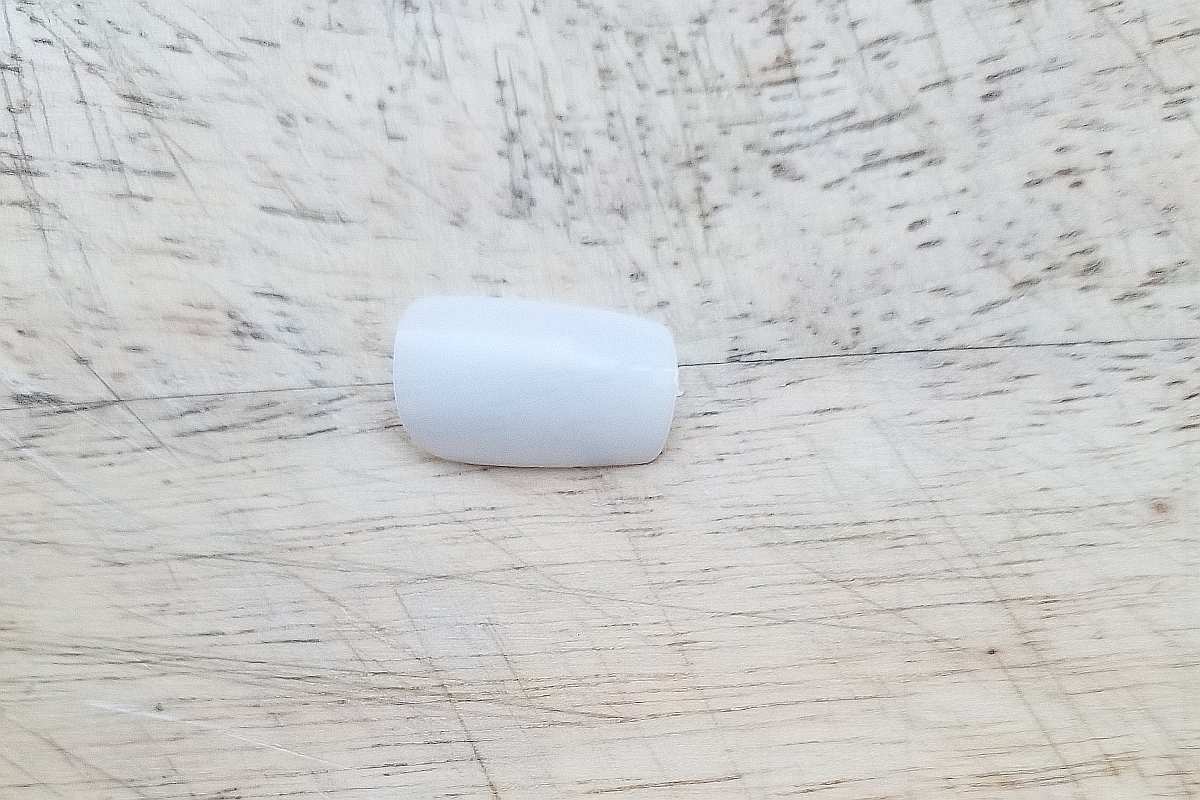Are you a guitarist confused about your nails? Here's the complete guide using fingernails to play fingerstyle guitar.
If you're a guitarist with long fingernails only on one hand, typically someone who isn't a guitar player will mention it.
In my instance, it was an accordion player. He was surprised by the contrast between the long fingernails on my plucking hand and the short nails on my fretting hand.
I've always played guitar with fingernails, so having longer nails on my plucking hand has become second nature to me.
But to maintain them you will need some habits. If you do choose to play fingerstyle with nails, here is what you need to know.
- Do You Need Fingernails To Play Fingerstyle Guitar?
- How Long Should Your Fingernails Be For Fingerstyle Guitar?
- How To Shape Your Nails for Fingerstyle Guitar
- What Should You Do If Your Fingernail Breaks?
- How Do I Strengthen Fingernails For Fingerstyle Guitar?
- Can I Use Fake Nails Instead of Natural Fingernails for Fingerstyle Guitar?
- Is It Better To Grow Your Nails Or Use Finger Picks?
- Pros and Cons of Fingerpicking With Fingernails
Do You Need Fingernails To Play Fingerstyle Guitar?
Fingernails offer a practical advantage to play fingerstyle guitar. Playing fingerstyle guitar with nails helps with tone production and precision. The nails act as natural guitar picks, allowing for a sharper and more defined sound.
When you play fingerstyle with nails, you're actually using both the fingertip and the nail together.
When you pluck the string, as long as your fingertip is making contact with the string just before the fingernail engages it, you're plucking just fine.
Do You Need Long Fingernails To Play Fingerstyle Guitar?
No, it's not necessary to have long nails to play fingerstyle. Although many fingerstyle guitar players have long nails, you can successfully finger pick with very short or with no nails at all.
The choice of fingernail vs. no fingernails ultimately comes down to personal playing preference. Guitarist Chet Atkins didn't have particularly long fingernails, and Certified Guitar Player Tommy Emmanuel prefers to play without nails at all.
I prefer shorter fingernails because they require less care and are less prone to breakage than longer nails.
In addition, if you are used to playing guitar with long nails and one of your fingernails breaks, you will either have to find a solution with artificial nails or adapt to playing with an unfamiliar nail length.
We will talk about natural fingernail substitutes further on in this article.
Can You Play Fingerstyle Guitar Without Nails?
Yes, you can cut your nails and instead use the pads of your fingers to pluck the strings. If your fingerstyle guitar playing involves heavy usage of tapping, you may consider not having any fingernail at all.
Tommy Emmanuel keeps no nails, but his fingerstyle playing involves the use of a thumb pick, hybrid picking or percussion.
Note that if you switch from playing guitar with fingernails to no nails at all, this will affect the tone quality and possibly your right hand technique as well.
Ultimately, when starting out, I recommend keeping at minimum a very short fingernail. I like the benefit of fingernails with improving tone production and control. If you have short nails, you can still play fingerstyle guitar effectively.
I talk about effective use of fingernails in the first lesson of my course Play Fingerstyle Guitar Now!
How Long Should Your Fingernails Be For Fingerstyle Guitar?
Although I find that my plucking accuracy is improved with longer fingernails, my personal preference is to keep a shorter fingernail length for the plucking hand, except for the thumbnail, which I grow a bit longer.
Long fingernails have the added advantage of better volume and better tone quality.

My personal opinion is that fingerstyle guitar sounds best when playing with fingernails, although some guitarists disagree with this. The only reason to keep extremely short nails in my opinion is if you do a lot of tapping and percussion.
Remember, long fingernails require more care and maintenance, and are subject to breaking or damage after long periods of playing, especially on steel string guitars.
We will discuss how to prevent nail breakage a little later on.
How To Shape Your Nails for Fingerstyle Guitar
If you are just starting to play fingerstyle guitar, use a nail file to shape your nails into a smooth curve that follows the natural shape of your fingertip.
If the centre of your nail points downward, you'll want to eliminate that part of the fingernail by filing straight across the centre of the nail.

Be cognizant of the area of the nail that enters in contact with the string. This is the part of the nail that should be perfectly smooth.
If you aren't sure which part of your fingertip touches the string, avoid filing your nails for a period of time. Grow them out a bit and keep the edges straight. Play a pattern like the spider exercise on the thickest string for 5-10 minutes.
Afterward, examine your fingernails. The worn-down spot on your nail is the area where your nail enters in contact with the string. This is what you need to smooth out for better string contact.
Use a nail file or fine grit sandpaper (1600) to make the fingernails the desired length. Glass nail files are much better for guitar players than metal files.
In my premium online course Play Fingerstyle Guitar Now!, you will see my exact technique for filing your fingernails to the correct shape.
Always pay attention to regular nail care after performing for long periods on steel string guitars, especially after playing aggressive techniques such as rasgueado.
What Should You Do If Your Fingernail Breaks?
As a fingerstyle guitarist, you will inevitably experience a nail breakage – it's just part of the deal. I mostly practice on a nylon string guitar to minimize nail breaks, but ultimately, breaks are inevitable.
The most common nail issue I have are cracks that appear along the side of the fingernail. I can usually file them down before they get too bad, but sometimes I have to remove a chunk of the nail to stop the crack from growing.
If a crack covers about half the nail, don't be tempted to rip it off. Even after a major break, saving the sides can give you enough nail to engage with the string as you pluck it, i.e. to feel the 'bite' on the string.

Filing the nail immediately after a partial break will also provide more surface for a fake nail if needed.
But sometimes, like when doing rasgueado, the whole nail can just shred off. In that case, you'll have to play without a nail or use a fake one.
How Do I Strengthen Fingernails For Fingerstyle Guitar?
Playing metal stringed guitar, as is often the case in fingerstyle guitar, will wear down the fingernails faster than with nylon strings.
Fortunately, fingernail maintenance for fingerstyle guitar is relatively easy. The simplest thing is to protect your nails and avoid situations where they may shatter or become cracked.
Focus on hydrating your hands and fingernails for optimum health. If you live in a dry climate, apply moisturizer on a regular basis to keep your nails from becoming brittle.

Frequent changes in humidity or temperature, like washing dishes in hot water, can negatively affect the health of your skin and nails. Try to avoid or minimize doing these activities.
What Products Help Strengthen Fingernails?
Cuticle oil or nail strength formulas exist to reinforce natural fingernails for guitar playing. There is no evidence that ingesting gelatin or other such edibles like Biosil® does anything to help to keep natural fingernails intact.
Cuticle oil is typically applied to the base of the fingernail to an area called the eponychium, which keeps debris out from under your nail. Although the nail grows from just underneath this area, you shouldn't use oil to soften the cuticle as it's meant to be tough and act as a barrier.
Commercial nail strengthener solutions come and go, so there's probably no magic formula for unbreakable nails. You may see recommendations for products like Onymyrrh and Nailtiques Formula 2 which have had supply issues or have been discontinued by the manufacturer.
The key to success with any nail strengthening product is consistent application – you'll need to use it for several weeks to see results.
Using nail polish is a terrible idea if you want to care and maintain your nails for fingerstyle guitar. The lack of moisture and oxygen caused by painting over your nails will weaken them over the long term.
Can I Use Fake Nails Instead of Natural Fingernails for Fingerstyle Guitar?
You absolutely can use fake nails for fingerstyle guitar. However, it may not be easy to switch back to regular nails after using fake nails for a long period of time.
Like with nail polish, be aware that adding anything semi-permanent to your nails will weaken them, so if you choose to go the fake nail route, this will generally be a long-term thing.
One ready-made solution is Rico Nails, created by Rico Stover. This method involves attaching a hard plastic nail to your natural fingernail using glue dots designed for craft projects.
These are designed to avoid health issues associated with fake nails and keep your natural nail healthy. Unlike other products like nail polish or acrylic nails, attaching a fake plastic nail with glue or double-sided tape won't damage your natural nails.

Applying a fake nail with glue usually requires burnishing the nail surface. This is term borrowed from electricians that refers to removing oxide and corrosion from metal. In this case, it refers to removing oils from your fingernail before applying fake nails.
If you choose to attach a fake nail with glue, make sure to swab your nails with alcohol before gluing to ensure a clean surface.
Don't use super glue, as it works by 'melting' the plastic, which can cause a chemical reaction damaging your nails and your health in the long term.
Can You Use Manicure Nails to Play Fingerstyle Guitar?
Investing in professional manicure services or artificial nails can significantly maintain the quality of your nails for fingerstyle guitar playing. Artificial nails can provide a durable and consistent surface for plucking the strings.
You will still have to shape the fingernail to fit your playing habits, often by using a set of nail files which are more abrasive than the fine grit sandpaper that you use on natural nails.
Is It Better To Grow Your Nails Or Use Finger Picks?
If you don't want to grow your nails or use artificial nails, you can also choose to use metal guitar picks that attach to the ends of your fingers.
There are also plastic finger picks called Alaska picks that fit underneath the fingernail. These are supposed to be closer to natural fingernails.
However I have never had much success with these finger picks. I much prefer to grow out and use my natural fingernails, or use artificial nails if I break a fingernail.
If you are just starting to learn to play fingerstyle guitar, I recommend using natural fingernails to start, and experimenting with nail picks or fake nails later on.
Pros and Cons of Fingerpicking With Fingernails
Pro: Enhanced tactile feedback
I feel that I have much better control over the strings when I play fingerstyle guitar with fingernails. However, you may find that you have more consistent tone and control regardless of nail length or condition.
Con: Less versatility in playing styles and genres
Some techniques, such as tapping, are easier to play with no fingernails at all. This is because it’s easier to hit the string directly with the fingertip of the plucking hand instead of avoiding hitting the string with the fingernail.
Percussive techniques are also better without fingernails, as aggressive percussion can shatter your fingernails if you hit the guitar body hard enough.
Pro: Less Finger Pain
Playing without nails will require more callous on your picking hand fingertips. This can lead to increased finger pain, especially when starting out.
Fingernails add an extra plucking surface to your fingertips, which means you may not feel any pain at all in your plucking hand.
Con: Requires Maintenance
Playing without nails or with very short nails reduces the need to focus on fingernail maintenance, such as filing your nails or avoiding biting.
If the sound you are producing with fingerstyle guitar isn't of very good quality, or isn’t very loud, you may have to adjust the shape of your fingernails.
Although playing without nails may result in a slightly softer and less defined sound compared to using nails, your sound will overall be more consistent because the shape of your fingertips won't change over time.



